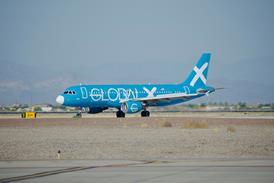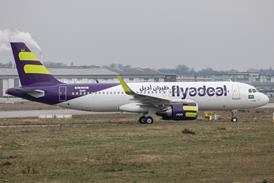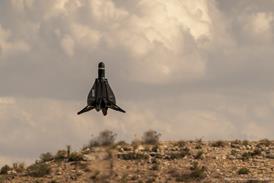Advanced paint methods have to comply with strict environmental protection regulations while the paint itself must be able to withstand extreme conditions during flight.
Paint acts as a protective sheath, shielding metal parts against corrosion while affording protection to composite components. Rain, hail or sand can damage surface protection, especially at high speed when the aircraft surface can be struck with a force equivalent to that of sand blasting. Moisture penetration into composite airframe components can also cause swelling.
Any protective coating must therefore withstand enormous stresses, starting with temperature fluctuations exceeding 100 degrees Celsius in tropical heat on the ground and -60 degrees Celsius at high altitude.
Despite the intense cold, the paint must remain elastic at cruise altitude as the airframe expands because of to the higher air pressure inside the cabin.
The aircraft structure also undergoes extreme variations in turbulence this is especially true of its wings.
Paint pigments must not be affected by ultraviolet radiation, which at cruise altitude is much more intense and, must also be able to withstand contact with jet fuel, oil or hydraulic fluid. Paint has to remain smooth, for less surface friction means better aerodynamics and lower fuel burn.
Repainting is a routine part of the major overhaul ('D' check), which is performed every 5-10 years depending on aircraft type and flight hours. Old paint is stripped off so the aircraft can be scrutinised for cracks or other damage. In addition, paint is inspected every five to six years for surface lustre, brittleness, cracking or discoloration and is touched up and polished where necessary. Of course, whenever an aircraft changes hands or the airline changes its livery, the aircraft is usually repainted.
Much research has been devoted to finding environment-friendly ways to remove old paint replacing the use of chemicals. Frozen carbon dioxide, wheat starch and laser techniques have all been researched.
For large surfaces, Lufthansa Technik will typically use a mixture of water, alcohol and 7-10% formic acid, a swelling agent applied with high-pressure pumps. After several hours, old paint can be removed with rubber scrapers.
Aircraft painting usually consists of several layers which together add up to a thickness usually of only about 0.1mm, the average thickness of a human hair. A green wash primer serves as initial undercoat and keeps moisture from forming while the second undercoat, the intermediate primer, protects against corrosion.
Though chromate-containing primers are highly effective against corrosion, they pollute the environment and are only used if specially requested by customers whose aircraft fly, for example, in very humid tropical regions. The top coat is a polyurethane paint free of heavy metals.
While modern high-solid paints contain a lower percentage of solvents, dramatically reducing environmental pollution, water-soluble paints containing no chemical solvents do not yet exist for aircraft. Such coatings have to be cured in special drying furnaces, impractical for large aircraft.
Related articles:
United colours
Phoenix reborn
Inside the engine market
Triple time twinjet
Tough on weather, soft on environment
Polymer coating stops Virgin Blue fading
Source: Flight International























